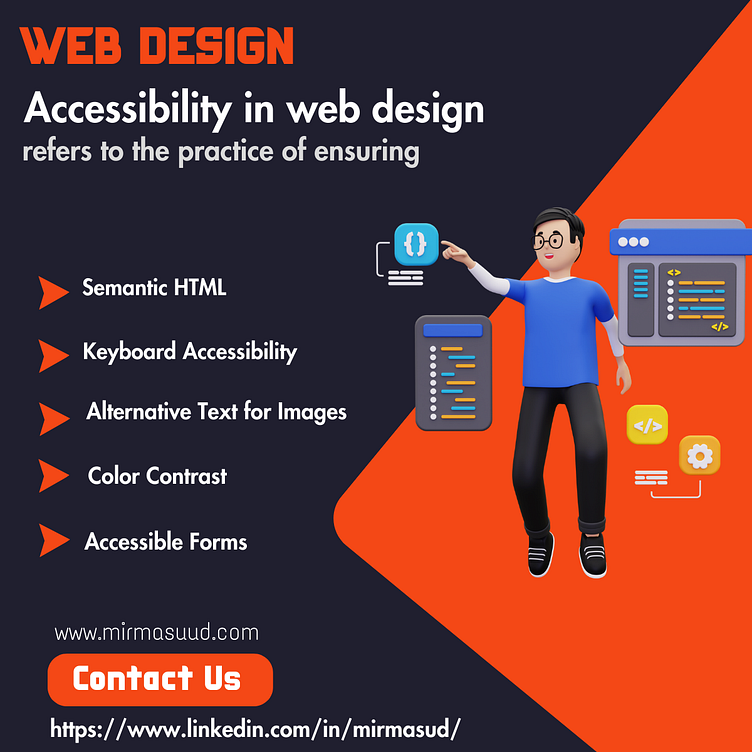Accessibility in web design
Accessibility in web design refers to the practice of ensuring that websites are usable and navigable by all users, regardless of their abilities or disabilities. This includes individuals with visual, auditory, motor, or cognitive impairments, as well as those using assistive technologies such as screen readers or voice recognition software. Implementing accessibility principles not only makes websites more inclusive but also enhances usability for all users. Here are some key strategies for ensuring accessibility in web design:Semantic HTML: Using semantic HTML elements such as <header>, <nav>, <main>, <footer>, etc., helps screen readers and other assistive technologies to properly interpret and navigate the content of the website. It also improves the structure and organization of the content for all users.Keyboard Accessibility: Ensure that all functionality and interactive elements on the website can be accessed and operated using only a keyboard. This is crucial for users who cannot use a mouse or other pointing device due to motor impairments.Alternative Text for Images: Provide descriptive alternative text (alt text) for all images on the website. This allows users who are blind or visually impaired to understand the content and purpose of the images through screen readers.Color Contrast: Ensure sufficient color contrast between text and background elements to make the content readable for users with low vision or color blindness. WCAG (Web Content Accessibility Guidelines) provides specific guidelines for color contrast ratios that should be adhered to.Accessible Forms: Design forms with clear labels, instructions, and error messages. Use proper markup and ARIA (Accessible Rich Internet Applications) roles to make form fields and controls accessible to screen readers.Video and Audio Accessibility: Provide captions and transcripts for videos and audio content to make them accessible to users who are deaf or hard of hearing. Additionally, provide controls for users to adjust the volume, pause, or stop the media playback.Responsive Design: Ensure that the website is responsive and adaptable to different screen sizes and devices. This benefits users with disabilities who may use a variety of devices to access the web, including smartphones, tablets, and assistive technologies.Focus Indicators: Ensure that interactive elements such as links, buttons, and form controls have visible focus indicators. This helps users who navigate the website using a keyboard or other assistive technologies to understand which element is currently focused.
